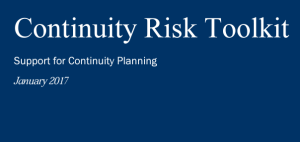
Understanding the Risk Matrix
A Risk Matrix helps visualize and systematically evaluate risks by plotting them based on their likelihood, impact, and consequence. This structured approach allows plan managers to easily identify which risks have the most significant consequences and require immediate attention. By using a Risk Matrix, you can prioritize efforts and resources to mitigate those risks that could severely affect individual department/units all the way up to university operations.
Incorporating a Risk Matrix into your planning process not only clarifies which risks need immediate mitigation but also enhances the development and execution of your Mission Continuity plans. By identifying and addressing the most critical risks proactively, you can streamline response efforts, minimize disruptions, and improve overall outcomes. This strategic approach fosters a more resilient and prepared university, capable of maintaining operations and safeguarding its community in the face of various challenges.
Developing a Risk Matrix
Here’s a step-by-step guide to adding a Risk Matrix to your Risk Assessment during plan development:
- Identify Risks
- List all potential risks that could affect your department. These might include natural disasters, cyber-attacks, supply chain disruptions, and more.
- Assess Likelihood
- Estimate the probability of each risk occurring (e.g., Remote, Unlikely, Possible, Probable, and Highly Likely).
- Evaluate Consequences
- Determine the potential impact category of each risk on university operations (e.g., Safety, Property, Operational, Compliance, Reputation, and Financial Impact).
- Determine Consequence Rating
- Determine the potential impact of each risk on university operations (e.g., Negligible, Minor, Moderate, Major, and Extensive).
- Plot on Matrix
- Place each risk on the matrix according to its impact category and impact consequence.
- Prioritize Risks
- Focus on high-likelihood, high-impact risks for immediate action and mitigation.
Resources for Plan Administrators


